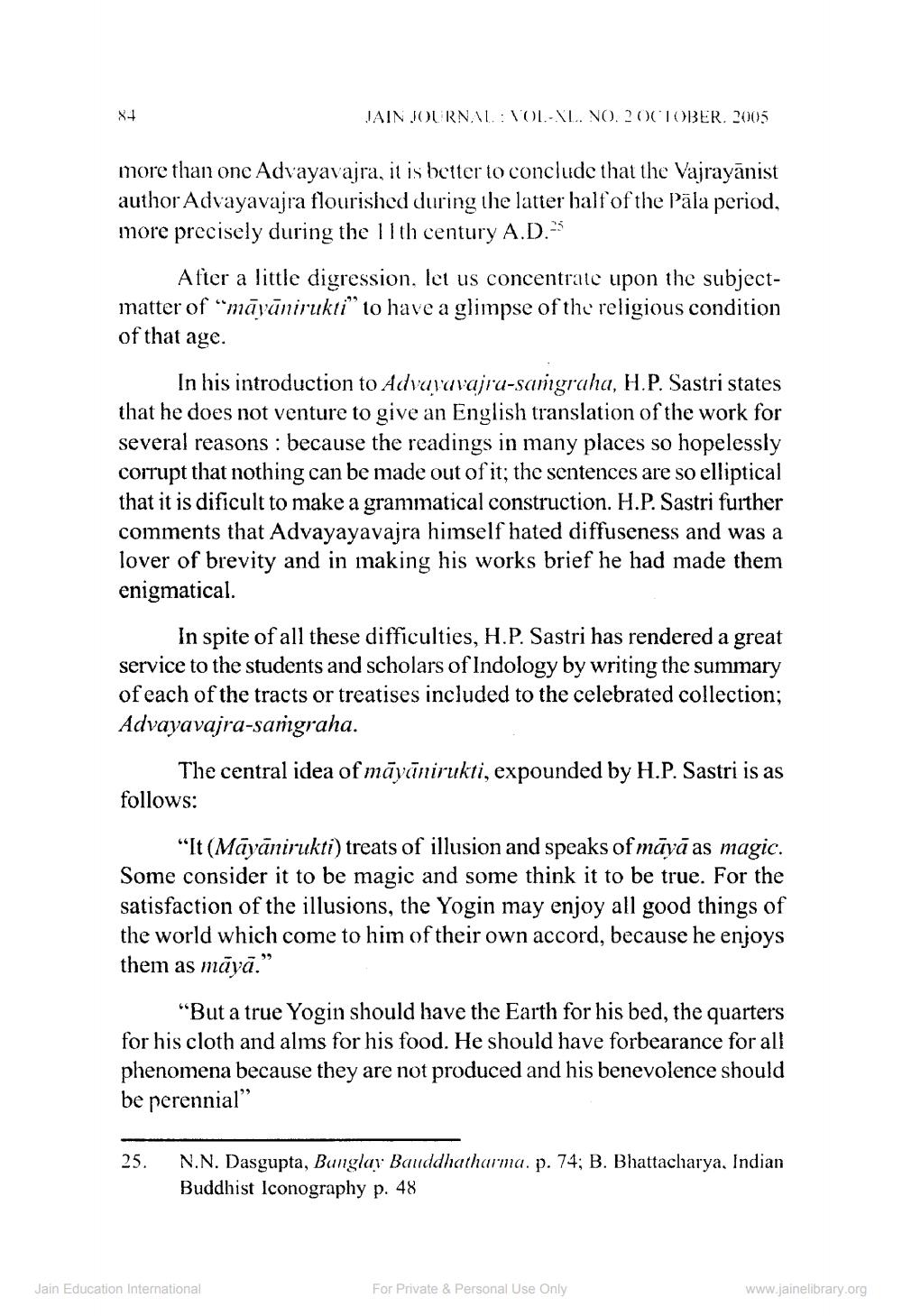________________
X4
JAIN JOURNAL : VOL-XL. NO. 2 OCTOBER 2005
more than one Advayavajra, it is better to conclude that the Vajrayānist author Advayavajra flourished during the latter half of the Pāla period, more precisely during the 11th century A.D.-
After a little digression, let us concentrate upon the subjectmatter of "māpānirukti" to have a glimpse of the religious condition of that age.
In his introduction to Advaravajru-samgraha, H.P. Sastri states that he does not venture to give an English translation of the work for several reasons : because the readings in many places so hopelessly corrupt that nothing can be made out of it; the sentences are so elliptical that it is dificult to make a grammatical construction. H.P. Sastri further comments that Advayayavajra himself hated diffuseness and was a lover of brevity and in making his works brief he had made them enigmatical.
In spite of all these difficulties, H.P. Sastri has rendered a great service to the students and scholars of Indology by writing the summary of each of the tracts or treatises included to the celebrated collection; Advayavajra-samgraha.
The central idea of māyānirukti, expounded by H.P. Sastri is as follows:
"It (Māyānirukti) treats of illusion and speaks of māyā as magic. Some consider it to be magic and some think it to be true. For the satisfaction of the illusions, the Yogin may enjoy all good things of the world which come to him of their own accord, because he enjoys them as māvā.”
"But a true Yogin should have the Earth for his bed, the quarters for his cloth and alms for his food. He should have forbearance for all phenomena because they are not produced and his benevolence should be perennial”
25.
N.N. Dasgupta, Bunglar Bauddhatharma, p. 74; B. Bhattacharya, Indian Buddhist Iconography p. 48
Jain Education International
For Private & Personal Use Only
www.jainelibrary.org




